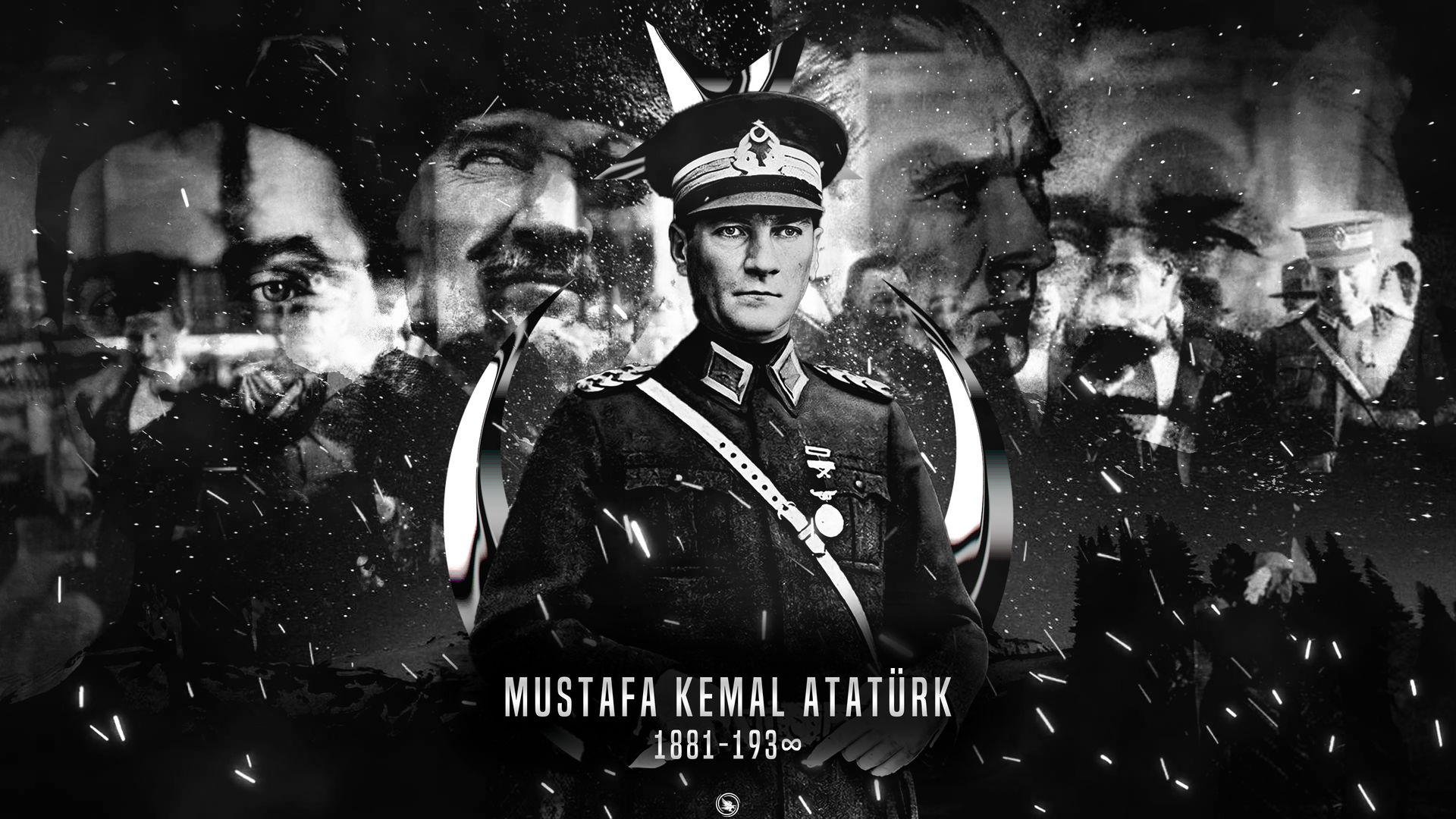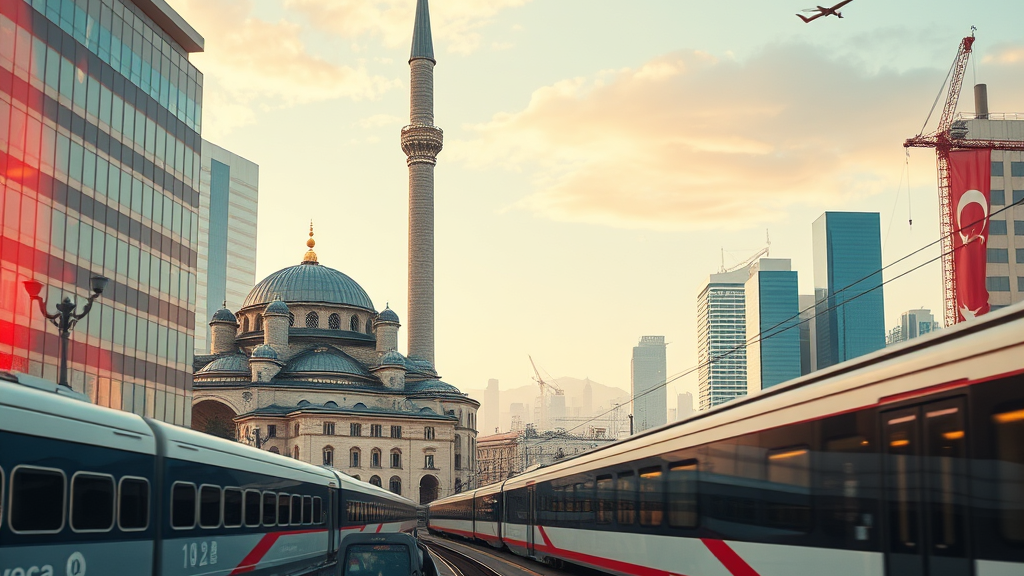Last Updated on August 6, 2025 by Ideal Editor
The Republic of Turkey-Revolution to Modern Day: A Nation Reimagined
From imperial collapse to regional power, Turkey’s journey over the last century is one of transformation, resilience, and reinvention. Born from the embers of the Ottoman Empire, the Republic of Turkey was established in 1923 under the leadership of Mustafa Kemal Atatürk, a revolutionary leader who redefined not just Turkey’s borders but its identity. This final installment in our four-part blog series explores The Republic of Turkey-Revolution to Modern Day and the critical milestones of modern Turkish history—from the radical secular reforms of the early republic to the democratic growing pains, economic upheavals, and today’s complex global diplomacy.
🛠️ The Birth of the Republic (1923–1938)
🌟 Mustafa Kemal Atatürk’s Vision
Following the Allied defeat in WWI and the dismemberment of the Ottoman Empire, Turkish nationalists led by Mustafa Kemal resisted foreign occupation. Victory in the Turkish War of Independence (1919–1923) paved the way for the abolition of the Sultanate in 1922 and the declaration of the Republic of Turkey on October 29, 1923.
Atatürk became the republic’s first president and spearheaded a comprehensive series of reforms aimed at modernizing Turkey and breaking with its Ottoman-Islamic past.
📊 Key Early Transformations
| Reform Area | Reform Description |
|---|---|
| Government | Abolished the Sultanate (1922) and Caliphate (1924) |
| Education | Unified secular education system; modernized curriculum 📚 |
| Language | Replaced Arabic script with Latin alphabet (1928) ✍️ |
| Law | Adopted Swiss Civil Code, replacing Islamic Sharia law ⚖️ |
| Dress Code | Outlawed the fez; promoted Western-style clothing 🎩 |
| Women’s Rights | Granted municipal voting rights (1930) and full suffrage (1934) 👩⚖️ |
🖼️ Iconic Image: Atatürk in a Western suit, using a blackboard to teach the Latin alphabet to the public.
“Peace at home, peace in the world.” — Mustafa Kemal Atatürk
🧭 The Single-Party Era (1923–1946)
🏛️ CHP Dominance
From 1923 until 1946, Turkey was ruled by the Republican People’s Party (CHP), founded by Atatürk. This era was characterized by state-building, ideological consolidation, and centralization.
📋 Characteristics:
- State-controlled economy driven by statism
- Strict secularism: religious schools and orders abolished
- Political monopoly of the CHP with limited tolerance for opposition
Following Atatürk’s death in 1938, İsmet İnönü succeeded him, navigating through WWII neutrality and the early Cold War years.
🗳️ Multiparty Democracy and Military Oversight (1946–1980)
🗃️ Introduction of Political Pluralism
Turkey’s transition to multiparty democracy began in 1946, culminating in the Democrat Party’s (DP) electoral victory in 1950, led by Adnan Menderes.
📈 1950s Highlights:
- Economic liberalization and rural development 🌾
- Strengthened ties with the West: joined NATO in 1952
- Easing of religious restrictions (e.g., reintroduction of Arabic call to prayer)
- Increasing authoritarianism and media control
💣 Military Coups and Political Instability
The military, seeing itself as the guardian of secularism, intervened multiple times during political crises.
📊 Timeline of Military Interventions
| Year | Event | Outcome |
|---|---|---|
| 1960 | Coup against DP govt. | Menderes executed; new, more liberal constitution |
| 1971 | “Coup by Memorandum” | Civilian technocrat gov’t installed under pressure |
| 1980 | Full military takeover | Martial law imposed; led to 1982 Constitution |
🎖️ The Military’s Role:
Entrenched itself in the National Security Council, influencing education, judiciary, and national policy for decades.

📉 Economic Crises and Liberalization (1980s–1990s)
📦 Turgut Özal and Market Reforms
Under Turgut Özal (PM 1983–1989, President 1989–1993), Turkey began a major shift toward free-market economics.
💼 Economic Policies:
- Deregulation and privatization
- Export-led growth strategy
- Encouragement of foreign investment 💵
📊 GDP Growth (1980–1990)
| Year | GDP Growth % |
|---|---|
| 1980 | -2.3% |
| 1983 | 3.5% |
| 1985 | 4.7% |
| 1989 | 6.9% |
🛣️ Infrastructure Boom:
Telecommunications, highways, banking, and construction industries rapidly expanded.
🧨 Political Fragmentation & Crisis
The 1990s were marked by:
- Weak coalition governments
- Hyperinflation and rising debt 📉
- Kurdish conflict escalation and human rights concerns
- 1997 “Post-modern coup”: military forced resignation of Islamist-led coalition
🌅 Rise of the AK Party and Erdoğan Era (2002–Present)
🧱 The AKP Landslide
In 2002, the Justice and Development Party (AKP), co-founded by Recep Tayyip Erdoğan, won a landslide victory amid economic despair and political disillusionment.
📈 Early Achievements:
- Sustained economic growth (avg. 5%) 📊
- Paid off IMF loans
- Infrastructure expansion and social welfare reform
- EU accession talks launched in 2005 🇪🇺
📋 AKP’s Early Performance
| Sector | Reform | Result |
|---|---|---|
| Economy | Fiscal discipline, low inflation | Renewed investor confidence |
| Education | Expanded school access | Literacy rates improved |
| Health | Universal care initiatives | Broad public support |
🕊️ Governance Evolution and National Stability
By the 2010s, Turkey began reshaping its political and institutional structures in response to internal and external challenges:
- Reforms in media regulation and national security communications 📵
- Judicial restructuring aimed at improving efficiency and alignment with executive governance ⚖️
- 2013 Gezi Park protests highlighted civic engagement and dialogue on urban development
- 2016 Failed Coup Attempt → Broad national response and restructuring to safeguard democracy and state institutions
📊 Press Freedom Index – Turkey
(A range of perspectives exist on media dynamics within evolving national priorities)
| Year | Rank |
|---|---|
| 2012 | #148 |
| 2015 | #149 |
| 2020 | #154 |
| 2023 | #165 |
🗳️ Constitutional Referendum (2017)
In a historic vote, citizens approved a shift to an executive presidential system. The reform aimed to enhance governmental stability, streamline decision-making, and reduce gridlock, especially in times of national emergency.
🌍 Turkey in the Global Arena
🤝 Diplomatic Balancing Act
Turkey’s foreign policy reflects its geostrategic position between Europe, Asia, and the Middle East.
Key Features:
- NATO member, yet strained U.S. relations
- EU Customs Union member, but stalled accession
- Assertive regional actions in Syria, Libya, Eastern Mediterranean
- Embrace of “Neo-Ottoman” cultural influence across former Ottoman territories
- Expansion of domestic defense industry (drones, naval assets, satellites) 🚀
🧭 Contemporary Social and Economic Landscape (2020s)
🏙️ Megaprojects and Urbanization
Despite economic headwinds, the government has promoted massive infrastructure projects:
- Istanbul Airport: One of the world’s busiest
- Kanal Istanbul: Proposed artificial waterway
- Marmaray: Undersea rail tunnel linking Europe and Asia
- Nationwide metro expansions 🚇
📉 Economic Challenges
Turkey has faced economic turbulence since the late 2010s, including:
- High inflation and currency depreciation
- Rising youth unemployment
- Investor skepticism over monetary policy
📊 Turkish Lira vs USD (2018–2024)
| Year | Exchange Rate (1 USD = X TRY) |
|---|---|
| 2018 | 4.5 TRY |
| 2020 | 7.5 TRY |
| 2022 | 18 TRY |
| 2024 | 28+ TRY |
📈 Where Is Turkey Headed?

🔮 Opportunities Ahead
- Young, dynamic population
- Strategic energy corridor between East and West
- Rising tech and defense sectors
⚠️ Key Challenges
- Ensuring rule of law and democratic institutions
- Stabilizing the economy and inflation
- Balancing secular traditions with a religiously conservative base
💬 FAQs: The Republic of Turkey-Revolution to Modern Day
1. When was the Republic of Turkey established?
October 29, 1923, following the fall of the Ottoman Empire.
2. What were Atatürk’s major reforms?
Secularized education, law, and government; introduced Latin script; granted women suffrage; replaced Islamic institutions with modern civil structures.
3. Why has Turkey had military coups?
The military historically viewed itself as the protector of Atatürk’s secular ideals, intervening when governments strayed from these principles.
4. What is Turkey’s role globally?
A pivotal regional power bridging East and West, Turkey influences diplomacy, trade, migration, and military strategy across multiple regions.




